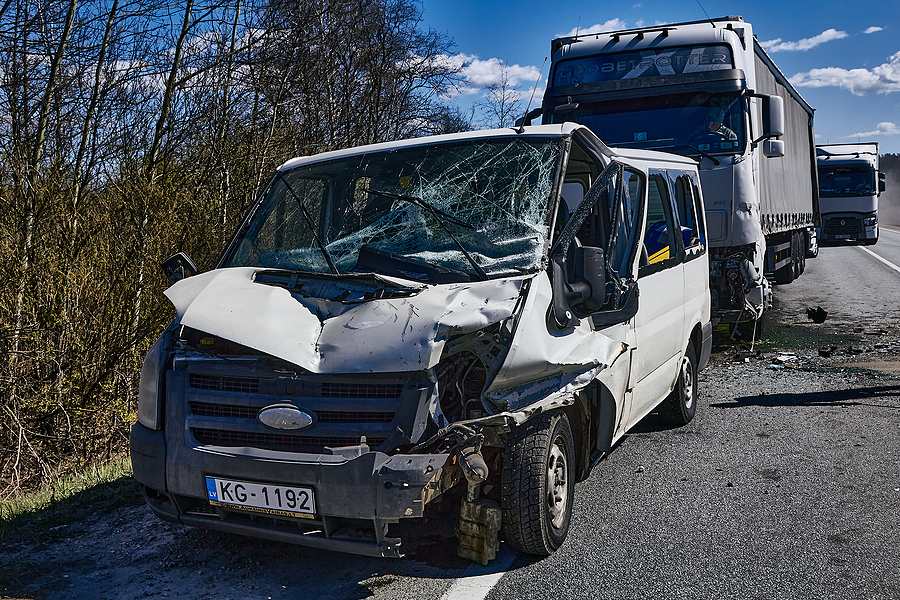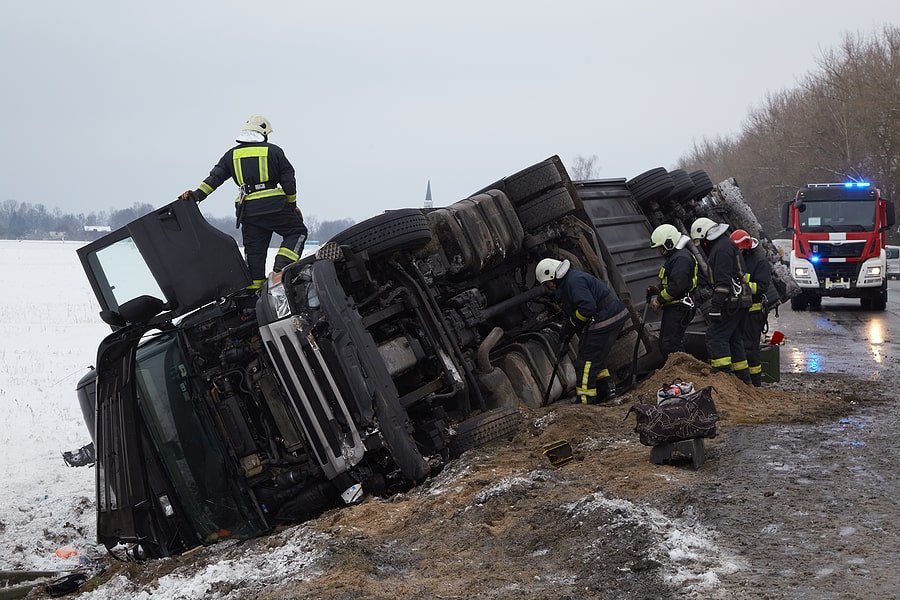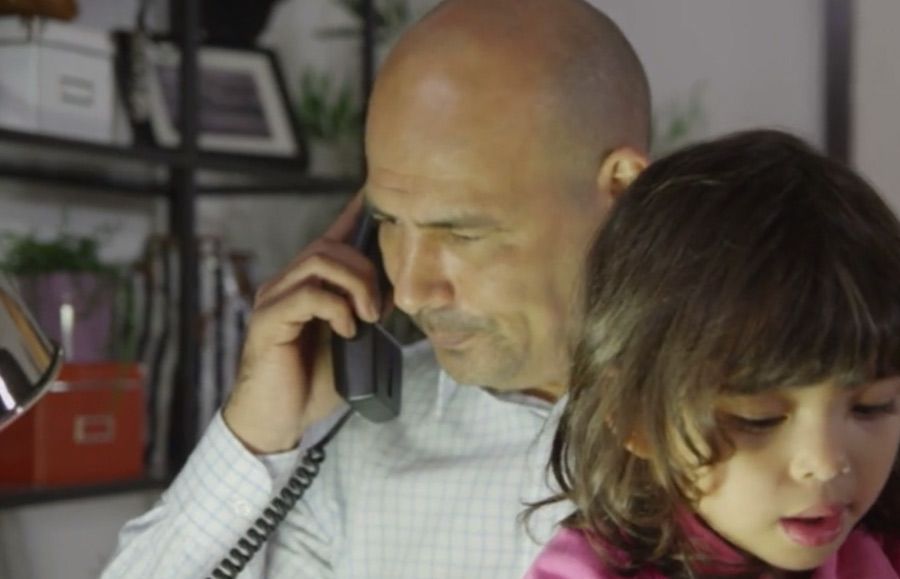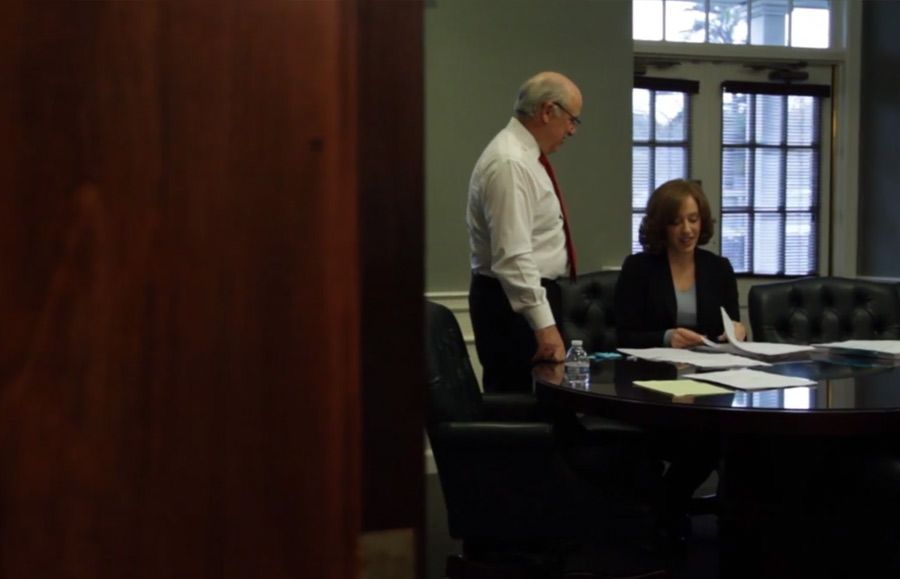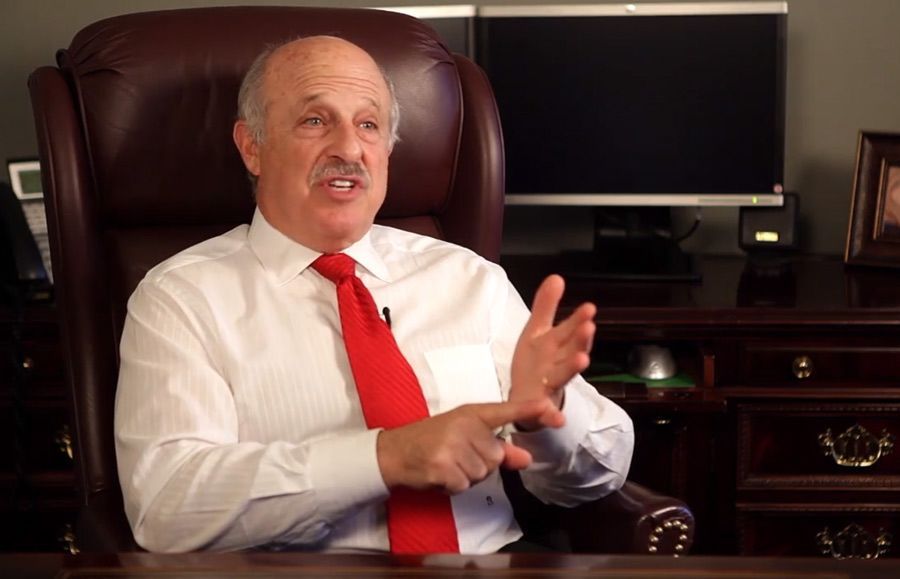 In New York State, most trucking accident cases settle rather than go to an award in litigation. However, sometimes, for whatever reasons, the trucking company, its insurance company, or some potentially liable party refuses to settle. At that point, you will need to go to court after a trucking accident to obtain the compensation you need and deserve. The following material looks at how that process works.
In New York State, most trucking accident cases settle rather than go to an award in litigation. However, sometimes, for whatever reasons, the trucking company, its insurance company, or some potentially liable party refuses to settle. At that point, you will need to go to court after a trucking accident to obtain the compensation you need and deserve. The following material looks at how that process works.
For a free legal consultation, call 516-451-7900
Who Can You Hold Liable?
Although your truck accident attorney has no doubt already engaged in investigating potentially liable parties while attempting to settle your trucking accident case, they will need to look at this liability information from a slightly different viewpoint now.
There are no actual ethical requirements in the process of settling a claim. Your attorney has done enough research to know who might be liable and has sent a demand letter. The back-and-forth discussion that is settlement begins from there and ends in most cases with a settlement or litigation.
Litigation is a different matter. Like federal courts, New York State courts require a certain level of good faith belief on the part of the attorney filing a case. Under New York law, the court may sanction an attorney or the parties to litigation for frivolous conduct in litigation.
For these purposes, conduct is frivolous if:
- The motion is without merit in existing law and cannot be justified by a reasonable argument extending, modifying, or reversing existing law.
- The attorney has submitted the motion primarily to delay the litigation or harass or maliciously injure another party to the case.
- It asserts materially false alleged facts.
Before filing a lawsuit, your attorney must be comfortable that your case meets these standards for each potential defendant.
Pre-Litigation Moves
Before beginning the negotiations for a settlement, your attorney will have thoroughly investigated your case. At that point, the attorney will draft a demand letter for each potential defendant. These letters lay out your claim against that party and state the amount for which you will be willing to settle. Negotiations will continue until, as noted, it becomes clear that the case will not settle outside of a litigation environment.
Click to contact our personal injury lawyers today
Where to File
Your attorney must file a lawsuit in the proper location. Usually, this is the county where the parties reside (or, in the case of a company, are located). If one of your defendants is a governmental unit, the rules are somewhat different, but that is not too likely unless a city transit bus hits you, for example.
Complete a Free Case Evaluation form now
Pleadings
Pleadings are the documents filed to begin a lawsuit. Your attorney will file a complaint, naming the parties that you and your attorney have concluded are potentially liable. You, as the person filing the complaint, are the plaintiff. The parties you name as potentially liable in your complaint are the defendants.
The complaint lays out the minimal facts of the case as your side views them. The complaint then demonstrates how those facts constitute the causes of action claimed against each of the defendants.
For example, if your attorney alleges that the trucking company negligently hired the truck driver and that the negligent hiring was the direct and proximate cause of your injuries.
The complaint will have to lay out the element of this case, duty to hire with care, breach of that duty, injury caused by the breach, which results in damages to you, and support each element with enough facts to support the claim. Note that your complaint does not have to prove the claim. It merely has to make sufficient allegations of facts that, if true, will prove the cause of action you are prosecuting.
After receiving the complaint, the named defendants have 20 (sometimes 30) days to appear in court and file an answer, sometimes with counterclaims and affirmative defenses. You may file a response to the answer, and the defendant can respond to your responses.
At that point, the pleadings are generally complete. The answer must respond to every allegation in the complaint. Any fact the defendant doesn’t deny they are admitting. The answer may also include counterclaims and affirmative defenses. The latter are statements admitting that one did it but explaining why one should not be liable.
Service
After your attorney completes the draft, they will serve the complaint, with a summons to come to court, on the parties named as defendants. Anyone over 18 who is not a party can serve the summons and complaints. Once they complete the service, they must fill out an Affidavit of Service.
Service can be by
- Personal Delivery – Someone hands it to the defendant (or a business, an agent of the defendant)
- Substituted Delivery – Leaving the complaint with a suitable person at the defendant’s residence or place of business. A copy must also be mailed, marked Personal and Confidential, within 20 days.
- Conspicuous Place Deliver – If, after three attempts, the server can’t find anyone to receive a summons, you may service by affixing the complaint to the door of the residence or business and mailing a Personal and Confidential copy within 20 days. The envelope may not indicate that it is from a law firm or contains a summons.
Once the service of the parties is complete, the case will go on the court’s calendar, and everyone will file appearances.
Discovery
After filing the pleadings, all sides will engage in the discovery process. This exchange of information intends to whittle down the issues to what both parties are genuinely contesting. The primary discovery methods are depositions (witness interviews under oath), interrogatories (questions to the party answered under penalties of perjury), and subpoenas requesting documents from the other parties.
Discovery is often the most prolonged and slowest party of a case and can continue up to the scheduled trial date. Successful discovery can lead to a quick settlement if certain parties’ liability becomes very clear, or it can reduce the case to only those issues that both parties dispute.
Pre-Trial
The pre-trial period is essentially a formal continuation of the negotiating between the parties before your attorney files the case.
Pre-trial is a stage where many cases are settled or, in multiple defendant cases, certain defendants settle out of the case. In other words, one or more defendants may decide that the case against them is strong enough that they should settle rather than risk a jury verdict, while others choose to continue to trial.
Trial
The trial begins with each side presenting their case before the judge and jury if there is one. They start with opening statements in which first the plaintiff lays out that case and how they expect to prove it. After this comes the defendants’ opening statements, essentially denying what the plaintiff says it will provide.
The following are the ordinary steps in a civil jury trial:
- Voir Dire – A process of questioning a panel of potential jurors that the attorneys may accept or reject. Rejections can be for cause (e.g., a panel member is related to one of the parties) and peremptory challenges, which have no basis other than the given attorney not wanting the given juror.
- Opening Statements – Each side presents a summary of its case and what it argues will or won’t get proven.
- Presentation of evidence – Taking testimony and questioning witnesses. The plaintiff goes first and presents its case with testimony and documents. Afterward, the defendants can make some motions that might end the case or most likely must submit their claim and, at the same time, undermine the plaintiff’s case or attempt to focus liability on another of the parties. In a case involving a large commercial truck, this process can take a long time, especially since expert testimony about various aspects of the case may be required. During this process, the lawyers may ask the judge to make decisions about matters of law by making objections. If an attorney strongly disagrees with the judge’s decision, the attorney will say so, preserving the issue for appeal.
- Closing Arguments – Just as opening statements say what the party hopes to prove, closing statements state what each party thinks it proved.
- Giving Case to Trier-of-Fact (Judge or Jury) – The judge formally turns the case over to whoever will decide it. In a bench trial, the court itself will decide the case. If the jury decides, the judge will formally instruct the jury members on the law relating to the case and how they are to apply it. In the jury room, the jury will usually follow those instructions, but sometimes they decide entirely contrary to the law. This result is called jury nullification. New York requires that at least five-sixths of the jurors in a civil case agree on the verdict.
Judgment/Award or Settlement
The jury will also award damages, which can be economical (for example, medical bills), non-economic (like pain and suffering), or punitive (rare and hard to get). The judge may adjust the amount of the award if it appears to be well beyond a reasonable range. Usually, a court will award damages against each defendant separately. If the jury found that you somehow contributed to the accident, the court will reduce your award by the extent to which you were liable.
If your lawyer took your case on a contingency fee basis (no fees until you win), then the awards will be paid to your attorney and not to you directly. The attorney will pay certain outstanding expenses like medical and hospital bills from the award and will deduct the percentage of the award as its fee. The attorney will then send the remaining proceeds to you.
Appeal
If any party to the litigation is unhappy with the result, they have the right to appeal the verdict. In New York, the parties generally have 30 days from the decision to file an appeal. On appeal, the case will go to a higher court. The higher court will not retry the case.
Instead, it looks at the specific issues the appealing party raised, reads briefs, and hears oral arguments as to why the verdict was or was not a reasonable application of New York law. The party appealing the case is called the appellant. Everyone on the other side is an appellee.
Appellate cases do not include witnesses or evidence. Instead, the attorneys present their views of the case to the panel of judges who will decide the case. They will deliberate after the presentation and eventually present a decision. Parties losing at this stage can often appeal to a higher court.
Appeals are not automatic. They aren’t available just because a party did not like the result in the case. To appeal a case, the appellant must argue that the court handled something in the original case incorrectly. There are essentially three errors that you can appeal. There are clerical errors, factual errors, and matters of law.
Usually, an appellate court will hesitate to overturn a lower court’s finding of fact unless there is a clear error that materially impacts the case.
Perhaps the plaintiff believes the judge excluded evidence that they should have admitted. Or a defendant may think that the jury instructions improperly stated the law and that, under proper instructions, that defendant will not have been found liable. These issues of error in the lower court stem from the original record at the appellate level.
When the appellate court decides a case, it may proceed in several ways. First, it may deny the appeal stating that it correctly handled the allegedly erroneous issues. If it finds an error, it may find it to be harmless, reversible, or irreversible. Harmless errors do not result in overturning verdicts. By definition, they did not cause the appellant any harm.
In a reversible error, the appellate court will send the case back to the trial court to redo it with its findings in mind. If the appellate court finds an irreversible error, it will award the verdict to the plaintiff, having found that there is no way to fix the problem in the lower court.
Contact a Long Island Truck Accident Lawyer Today

Truck Accident Lawyer, Michael Gluck
If you or a loved one suffered an injury in a truck accident, you should not try to resolve your case by yourself. Insurance companies will hit you with lowball offers when you are already under high stress.
Let a skilled and experienced lawyer step in and be your financial recovery advocate, understanding cases like yours. Then, you will have time and energy to focus on your emotional and physical recovery without stressing over lost income and unpaid medical bills. Contact a truck accident attorney today.
